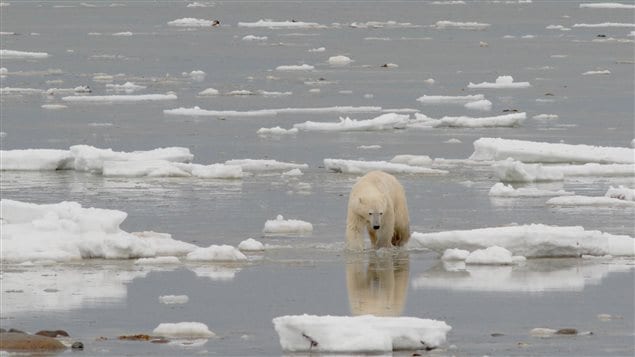Inuit hunters in Canada are celebrating a major victory after the U.S. Fish and Wildlife Service has decided to stop pushing for an international ban on the trade in polar bear parts.
“Though we remain concerned about the commercial use of polar bear hides as an additional threat to the species, we are not pursuing increased … protections at this time,” says a statement on the service’s website. “We are putting our resources into working in collaboration with other polar bear range states to address climate change and mitigate its impacts on the polar bear as the overwhelming threat to the long-term future of the species.”
The efforts by the U.S. agency to have polar skins and other parts put in the same category as elephant ivory were opposed by the Canadian government and Inuit groups, who rely on the income from the highly regulated trophy hunt.
Inuit groups claimed that the polar bear hunt brought much needed cash to Arctic communities with rampant unemployment from wealthy American, European and Asian hunters willing to pay up to $50,000 dollars for a chance to hunt polar bears.
U.S. and European opposition
The United States had sponsored votes at the last two meetings of the Convention on International Trade in Endangered Species (CITES) that would have prevented Inuit hunters from selling hides or teeth even after eating the meat.
Late last week, the service quietly dropped its campaign. It also appears that the European Union also has not listed the polar bear in its submission to the next meeting of the CITES Convention, which will take place from September 24 to October 5, 2016 in Johannesburg, South Africa.
Major countries EU had in the past opposed Canada’s position.
The Americans were also supported by groups such as Humane Society International, the Natural Resources Defence Council and the International Fund for Animal Welfare.
They all warned that allowing Canada to continue trading in the bears was contributing to more hunting at a time when their sea-ice habitat is shrinking because of climate change.
Global concern was strong enough for an international review to have been conducted in 2014 into Canada’s bear management.
Sustainable hunt
Canada along with Greenpeace, the World Wildlife Fund, influential scientific bodies and other NGOs said the Inuit hunt is sustainable and that the real threat to the bears is from climate change.
Hunting quotas for populations in particularly unstable habitats, such as those along Hudson Bay, have been significantly reduced.
Environment Canada reports that about 300 Canadian polar bears enter the international marketplace every year. That figure has not changed much in recent years and represents about two per cent of the total Canadian population of about 16,000.
With files from The Canadian Press







For reasons beyond our control, and for an undetermined period of time, our comment section is now closed. However, our social networks remain open to your contributions.